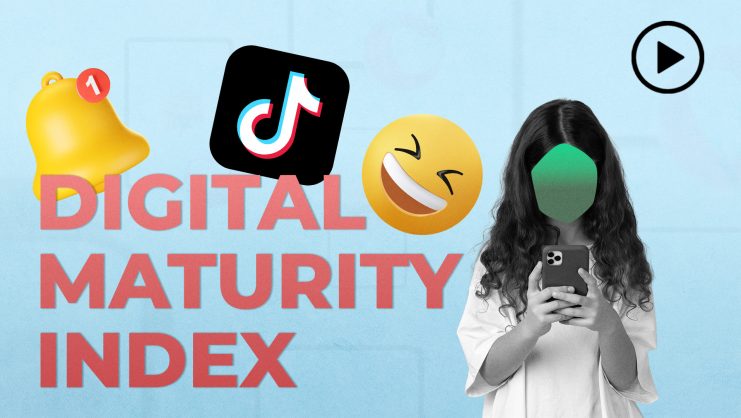Even if AI development were to halt today, it would probably take society and the human brain five to 10 years to fully absorb and harness the vast capabilities and change the technology has introduced. The pace of change brought by AI is that exhilarating and challenging.
For example, one significant leap forward has been AI’s ability to access real-time knowledge and analysis, and generate more information as it’s prompted. With the emergence of language models like Microsoft’s Copilot, Llama3, Gemini, and, of course, ChatGPT4, internet browsing has truly transformed into something new. Now, users can interact with language models directly within their own documents or with data stored on their devices, rather than solely relying on traditional internet browsing – meaning that the technology can integrate with user’s local data and provide assistance and generate content based on information contained within their personal files, thus eliminating the need for extensive browsing. This also means that AI has the potential to serve as our very own personal assistants. While this concept is still in development, it certainly holds promise for daily use in the near future.
AI’s evolution is evident in models like Claude, which now accept diverse document formats including PDFs. Private companies and institutions, such as GSK, Coca-Cola, and Goldman Sachs have started to embrace these advancements, creating their own large language models with proprietary information, ensuring different levels of cybersecurity to prevent data leaks. These LLMs have also become invaluable for coders, aiding not only in code production but also in real-time debugging. In addition, they can significantly enhance the efficiency and productivity of the coding process since they excel at understanding and generating human-like text. This makes them powerful tools for tasks like code completion, documentation generation, and problem-solving. These models can assist coders by suggesting code snippets, providing context-aware explanations, and even helping with debugging. Their ability to understand natural language queries enables a more intuitive and interactive coding experience, ultimately saving time and improving the overall development workflow.
The fear of missing out – FOMO – has always been prevalent when it comes to technology but the anxiety swirling around possibly missed opportunities in regard to AI adoption is palpable across industries and sectors. This also means it’s increasingly challenging for companies and startups to secure funding without integrating AI into their models. This heightened awareness reflects the growing significance of AI integration in business strategies. Startups, in particular, have undergone a transformative shift, leveraging generative AI to revolutionize their models. The ability of generative AI to create, adapt, and optimize content, code, or design elements has empowered startups to innovate rapidly, allowing them to stay competitive in dynamic markets.
As a result, the incorporation of LLMs has not only eased the anxiety associated with AI adoption but has also become a catalyst for attracting funding, as investors recognize the strategic advantage it provides in the ever-evolving landscape of technological advancements. This surge not only addresses the fear of missing out on technological advancements but also propels companies toward ambitious moonshots, fostering a landscape where innovation and transformative breakthroughs are not only desired but actively pursued.
We now rely on the quality and detail of our prompts to receive accurate and reliable AI responses.
The increasing investment in AI by companies underscores its pivotal role across industries. In recent years, global spending on AI technologies has witnessed a substantial uptick, with projections indicating a compound annual growth rate (CAGR) exceeding 20%. Industries such as healthcare, finance, and manufacturing are at the forefront of AI adoption, leveraging its capabilities for enhanced decision-making, process optimization, and innovative product development. Companies embracing AI have seen notable improvements in efficiency, cost reduction, and competitive advantage, highlighting the transformative impact of AI across diverse sectors.
We no longer simply submit a query to the Internet when we need more information. We now prompt. This evolution emphasizes the importance of teaching society how to frame questions effectively. In a mirroring of the past, when concise queries were necessary to navigate Google’s search functions, we now rely on the quality and detail of our prompts to receive accurate and reliable AI responses.
Traditional internet searches via platforms like Google demand brevity and precision to yield accurate results. In contrast, the dynamics shift with LLMs. Leveraging generative AI involves a reverse approach where prompting thrives on context specificity and detailed instructions. In this paradigm, prompting becomes more about instructing the AI comprehensively than merely formulating succinct questions. This reflects a nuanced and powerful evolution in information retrieval and interaction.
For example, a generic online search for ‘market trends’ would be a short question, but now we prompt an LLM with specificity, asking, ‘what are the current market trends in sustainable technologies within the renewable energy sector in Europe.’ Or instead of a broad inquiry like ‘financial industry safeguards,’ we now prompt with precision: ‘Provide detailed insights on emerging cybersecurity threats, due to the adoption of generative AI in the financial services sector.’
One of the most impactful applications of LLMs is in the field of medicine. Beyond curing and preventing diseases, these models streamline the daily tasks of healthcare professionals. AI aids in pre-filling routine answers to patient queries, allowing doctors and nurses to focus on reviewing rather than writing responses, significantly saving time and effort. For instance, according to IBM Research, in medical record documentation, AI-powered systems can automate the process of filling in routine information, potentially saving healthcare professionals several hours per week. Similarly, in diagnostic procedures, where AI assists in analyzing patient data and generating preliminary reports, the time saved by doctors can range from hours to even days, enabling a quicker and more effective response to patient needs. These time efficiencies not only enhance healthcare professionals’ productivity but also contribute to improved patient care and overall operational effectiveness in medical settings and positive impact on the healthcare system.
Likewise, in drug development there is an immense opportunity to apply the wonders of the latest AI technologies, that could model new discoveries by using digital twins, synthetic data, machine learning, and data analytics.
An example of this, is GlaxoSmithKline’s LLM JulesOS, an agent-based operating system that allows employees to retrieve and integrate data from across the whole corporation, including executive strategies, administrative tasks, scientific research, and business development. In their words, this LLM acts as a brain for the agents that interact with it, enabling them to create seamless strategies, timelines for deployment, and impact measurement.
At a societal level, this kind of efficiency translates into a positive impact on healthcare professionals. They can dedicate more hours to healing and research rather than administrative tasks. Looking ahead, there’s also potential for AI to generate personalized solutions for diseases with the supervision of health professionals, enhancing decision-making processes. The impact on patients and for society overall is unmeasurable in terms of both access and discoveries for health, wellbeing, and life enhancement.
For example, Mass General Bringham in the United States is a leader in the application of AI in healthcare. They have pioneered various AI-driven tools to elevate patient care, including predicting hospital readmissions and identifying sepsis risks. A notable success lies in AI’s application in radiology, where it expedites and enhances disease diagnosis by analyzing medical images like X-rays, MRIs, and CT scans. This innovation aids in early detection, particularly in cancer screening across global hospitals. Additionally, the hospital leverages AI in drug discovery, rapidly identifying potential drugs, optimizing combinations, and predicting patient responses. This multifaceted use of AI at Mass General Hospital contributes to more accurate diagnostics, personalized treatments, and overall advancements in healthcare.
These are all incredible uses of AI. However, on the very basic level, its usage is still primarily for convenience and productivity. So, even as we marvel at all the advancement that comes from the technology, a critical question looms before us: Are we prompting the right questions? Streamlining tasks and improving productivity is great, but AI can also be directed towards solving society’s more wicked problems. Prompting AI correctly and accurately is a skill that holds the key to unlocking the full potential of these powerful language models. The precision of prompts directly influences the quality of responses generated.
Moreover, responsibility also lies with the developers and creators of AI systems. Designing interfaces that guide users toward constructing well-formed prompts is crucial. User-friendly interfaces should prioritize clarity and precision, using clear instructions, intuitive prompts, and helpful suggestions to guide users in formulating effective queries. Visual cues and language suggestions contribute to a seamless interaction, while feedback mechanisms correct queries in real-time. Emphasizing user-centric design principles ensures that users can confidently navigate the interface, resulting in improved outcomes and satisfaction.
The synergy between user education and thoughtful interface design is essential for a harmonious interaction between humans and AI. By emphasizing the importance of meticulous prompting, we pave the way for a future where AI becomes an indispensable tool not just for efficiency but as a catalyst for profound societal advancements.
Meaningful progress hinges not just on the answers we seek, but on the thoughtfulness of our queries. This is not a novel concept. Historically, the greatest leaps in knowledge and innovation have always stemmed from the depth and quality of the questions we’ve dared to ask – and the advent of AI and its reliance on detailed, specific prompts is simply a modern manifestation of this truth. This interplay between question and answer, inquiry and discovery, has been the engine of human progress. As we integrate AI more deeply into our lives and work, we are reminded that our ability to harness its potential is not just a matter of technological prowess but also of intellectual curiosity and discipline. By cultivating a culture that values the art of asking profound questions – by crafting the right prompts – we enable AI to become a tool not just for efficiency but for achieving breakthroughs that address the fundamental challenges we face as society.
© IE Insights.











